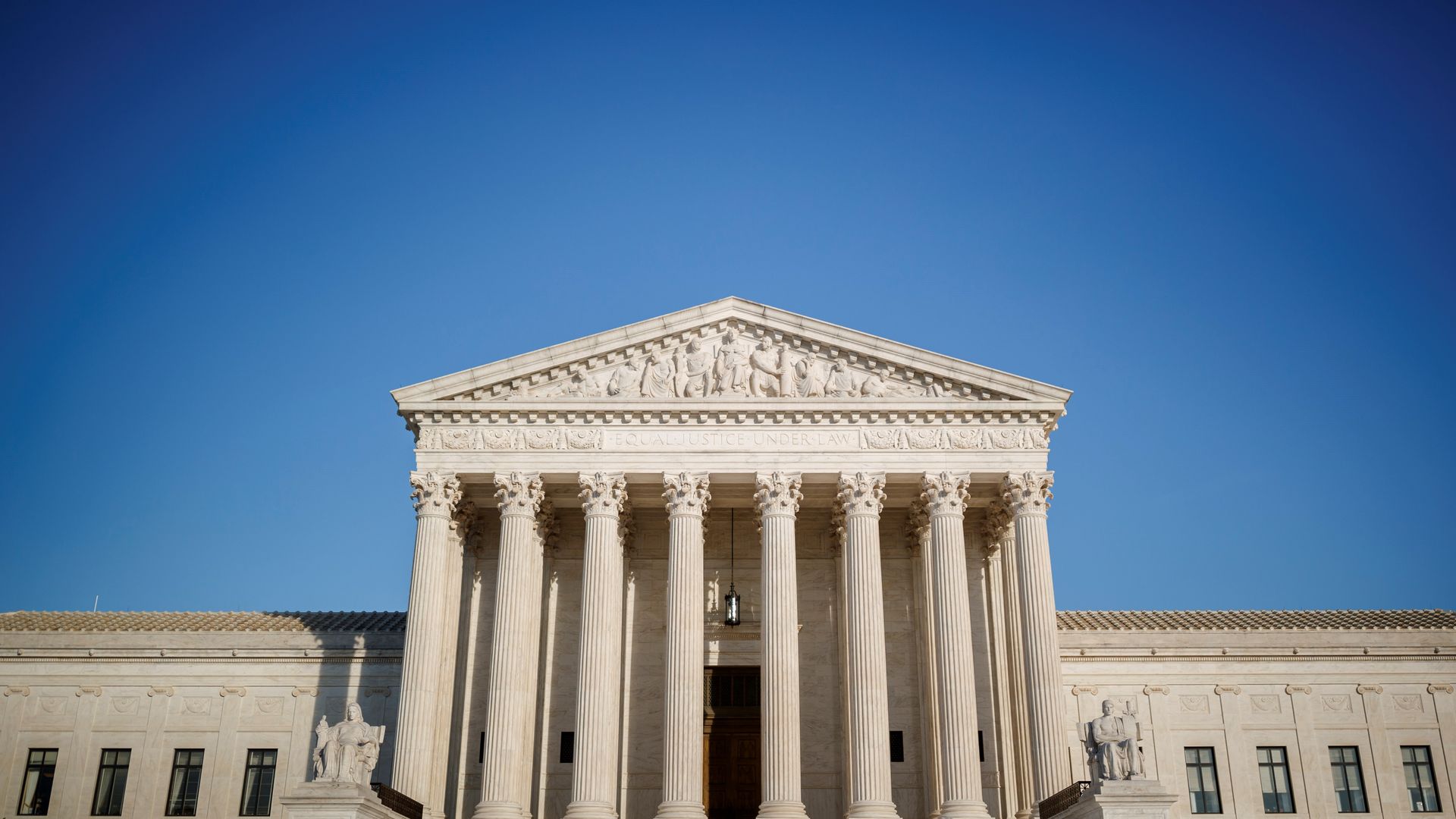
Photo: Xinhua/Ting Shen via Getty Images
The Supreme Court has tried to tread lightly so far in election-related cases — but that could change after Nov. 3.
The big picture: In its pre-election rulings, the court has largely preserved the status quo. But in the details and nuances of those decisions, it may have laid a foundation for a more conservative approach in its next wave of election cases.
Where it stands: The justices walked a complicated line through their pre-election caseload, most of which focused on extended deadlines by which absentee ballots had to be received.
- Ultimately, they allowed extended vote-counting in Pennsylvania and North Carolina, but rejected it in Wisconsin.
- The Supreme Court OK’d the two instances in which states — either state courts or state election officials — extended their own deadlines, but rejected the one extension, in Wisconsin, that came from a federal court.
What’s next: Pennsylvania and Minnesota are both states to watch as post-election litigation takes shape.
- Both states are setting aside ballots that arrive after Election Day, in case a court rules they should not be counted — ballots Republicans have said will become a point of contention if election outcomes are close.
Between the lines: Most of the court’s pre-election rulings were not fully formed, precedent-setting Supreme Court decisions. They’ll have clear and direct bearing on the election, but they didn’t reach many firm legal or constitutional issues.
- In Pennsylvania, for example, the court let an extended deadline stand but did not definitively rule on whether that extension was legal. It could revisit the issue if Pennsylvania’s results are in dispute.
- The court seemed to want to avoid changing whatever deadline was in effect, so close to Election Day and with voting already under way, said Josh Douglas, an election-law expert at the University of Kentucky.
What they're saying: “The Court has shown that it is very sensitive to the fundamental issue of voter reliance," Biden campaign legal adviser Bob Bauer told Axios. If people vote the way authorities have told them to vote, "it seems highly unlikely that Court is going to retroactively authorize discarding thousands of votes.”
- But there are good reasons to think the court could take a harder line in post-election cases.
The biggest change: Justice Amy Coney Barrett didn’t participate in any of the court’s pre-election cases, but she’ll be able to weigh in as new controversies reach the court — potentially strengthening the conservative bloc that came down against extended vote-counting in every case.
- Justices Clarence Thomas, Samuel Alito and Neil Gorsuch all wanted the court to block post-Election Day ballots in North Carolina and Pennsylvania.
- And Justice Brett Kavanaugh wrote a lengthy criticism of mail-in ballots in the Wisconsin case, strongly signaling that he’ll likely take a dim view of them in any post-election challenges.
Separately from its cases on absentee ballots, the court upheld Alabama’s statewide ban on curbside voting.
- That kind of deference to states bodes poorly for voting-rights advocates in the long run, Douglas said, and in the Pennsylvania and North Carolina cases, the court’s most conservative justices indicated they wouldn’t allow any entity other than a state legislature to extend the deadline for absentee ballots.
- That could make life harder for state election officials and courts trying to make judgment calls as vote-counting stretches past Nov. 3.
- Even if post-election decisions on these issues don't impact 2020 outcomes, they could have significant impacts on future elections, experts say.

